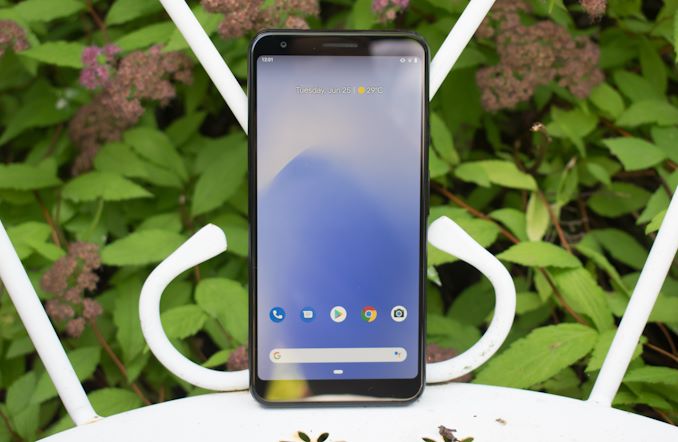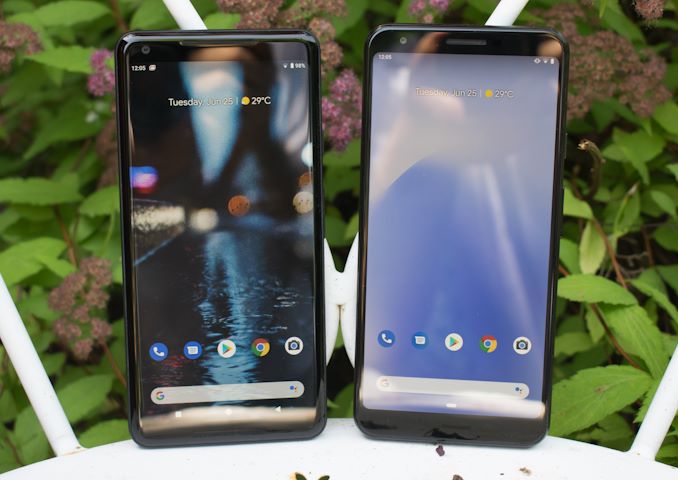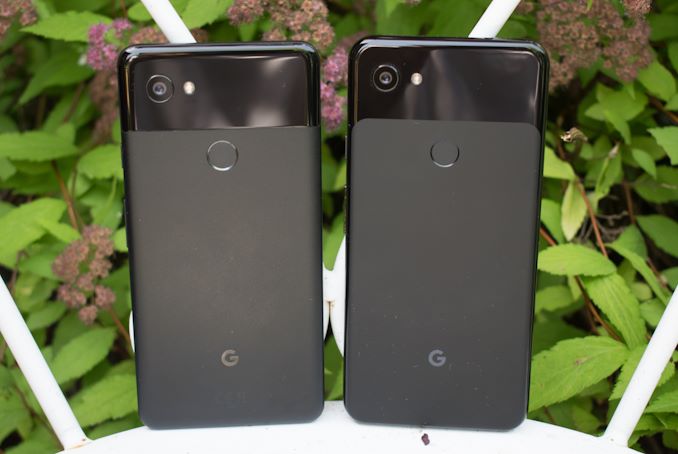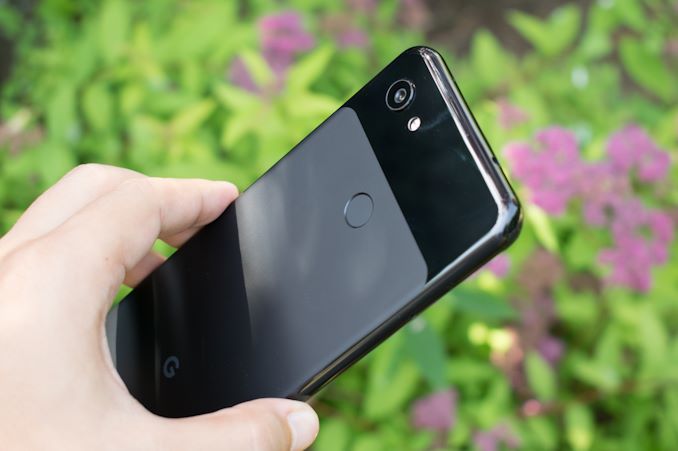The Google Pixel 3a XL Review: Does Mid-Range Make Sense?
by Andrei Frumusanu on June 27, 2019 8:00 AM EST- Posted in
- Mobile
- Smartphones
- Snapdragon 670
- Pixel 3a
- Pixel 3a XL

It’s nearing 8 months since Google released the Pixel 3 and we extensively reviewed the phone. It also has been several years now since Google abandoned the Nexus line of devices; one of the most attractive aspects during the early days of Google’s own phones was their incredible value proposition and very competitive pricing. As Google evolved the Pixel line of smartphones, it was clear that we’d no longer see quite as attractive price-tags, with the Pixel 3 and Pixel 3 XL nearing the $1000/€ mark.
Google apparently did see the higher price points as a hurdle for some consumers, and decided to expand its product line-up by introducing new mid-range devices at much more reasonable price-points, all while maintaining the key features that make the Pixel phones worth their namesake.
The new Pixel 3a and Pixel 3a XL, the latter which we’re reviewing today, are very much derived from the same DNA that was established in the Pixel 2 and further iterated upon in the Pixel 3 range. The Pixel 3a’s still come with the similar industrial design, feature an OLED display, and most importantly feature the very same full-fledged camera as their flagship siblings, at essentially half the cost. Of course, the lower price point comes with changes – a plastic body and a lower tiered SoC are among some of the compromises that have been made, along with a few other features that hit the chopping block.
| Google Pixel 3a's | ||||
| Pixel 3a |
Pixel 3a XL (Reviewed) |
|||
| SoC | Snapdragon 670 2x Kryo 360 (CA75) @ 2.0GHz 6x Kryo 360 (CA55) @ 1.7GHz Adreno 615 |
|||
| DRAM | 4GB LPDDR4X | |||
| Display | 5.6" OLED 2220 x 1080 (18:9) |
6.0" OLED 2220 x 1080 (18:9) |
||
| Size | Height | 151.3 mm | 160.1 mm | |
| Width | 70.1 mm | 76.1 mm | ||
| Depth | 8.2 mm | 8.2 mm | ||
| Weight | 147 grams | 167 grams | ||
| Battery Capacity | 3000mAh (Rated) | 3700mAh (Rated) | ||
| Wireless Charging | - | |||
| Rear Cameras | ||||
| Main | 12.2MP 1.4µm Dual Pixel PDAF f/1.8 76° lens with OIS |
|||
| Telephoto | - | |||
| Wide | - | |||
| Extra | - | |||
| Front Camera | 8MP 1.12µm f/2.2 84° lens; fixed focus |
|||
| Storage | 64GB eMMC | |||
| I/O | USB-C 3.5mm headphone jack |
|||
| Wireless (local) | 802.11ac Wave 2 Wi-Fi Bluetooth 5.0 LE + NFC |
|||
| Cellular | UE Category 11 (DL) / Category 5 (UL) 600Mbit/s DL (3xCA 2x2 MIMO) 75Mbit/s UL |
|||
| Other Features | Dual Speakers, 18W Fast Charging | |||
| Dual-SIM | 1x nanoSIM | |||
| Launch Price | $399 / £399 / €399 | $479 / £469 / €479 | ||
Starting off with the internal hardware of the Pixel 3a’s, we see the devices powered by a Qualcomm Snapdragon 670 SoC. Qualcomm had launched the SoC in August of 2018, so it’s not quite the newest unit on the market, but given the price sensitivity of the product category, that’s to be expected.
The Snapdragon 670 on paper looks very similar to the slightly higher-end Snapdragon 710: The SoC features 2x Cortex A75 derived cores at 2.0GHz and are paired with 6x Cortex A55 derived cores at 1.7GHz. In terms of computational power, it’s clear that we should be expecting the CPUs to perform quite a lot less than the Snapdragon 855 as well as last year’s Snapdragon 845. In terms of single-threaded performance at least, however theoretically the S670 would be able to compete with the S835, which was Qualcomm’s flagship for 2017. In fact, we’ll see some large performance similarities between the Pixel 3a and the Pixel 2, which is going to play a big part in terms of properly evaluating the end value of the Pixel 3a.
The GPU is an Adreno 615. Unfortunately we don’t tend to review mid-range SoC phones as much as we’d like to, so at first glance without testing there’s not too much context on exactly where this GPU lands in terms of performance. While I don’t want to spoil too much, don’t expect too much performance from the smaller IP block, although we’ll see some surprising power characteristics.
The phone comes with 4GB of LPDDR4X sourced by Micron – which is standard for the course and in my opinion still sufficient for today’s workloads – although it’s now on the lower threshold of what phones should be equipped with.
Arguably the phone’s biggest component compromise comes in the form of eMMC storage of which the devices only come with 64GB of, also made by Micron. While the typical NAND speed benchmarks aren’t too terrible, the different storage standard does struggle under heavy parallel workloads.
The display on the Pixel 3a XL is an OLED panel with a diameter of 6.0” with a resolution of 2220 x 1080 and a resulting aspect ratio of 18:9. The phone’s width is very similar to the Pixel 2 XL and Pixel 3 XL, so it’s still very much a big phone.
While the back of the phone very much looks nearly identical to the Pixel 2 XL or Pixel 3 XL, there’s one very major difference: Instead of being a metal or glass back body, the Pixel 3a’s come with a full plastic unibody shell.
The design decision very likely saves a lot on the production cost of the phone, and in my opinion Google’s material choice on the 3a’s has been excellent. The polycarbonate used is of very high quality and definitely one of the best plastic phones I’ve encountered. The phone still features the characteristic glossy top part of the phone, while the bottom is a sanded off matte finish that is surprisingly close to the finish of the glass back on the regular Pixel 3’s, which is great.
The one biggest issue I feel is that the plastic design will be significantly more prone to scratches and dents, and I especially don’t expect the top glossy part of the phone to remain unblemished after a few months of use.
A big selling point for the Pixel 3a is that it sports the very same camera module as the flagship Pixel 3 units. We find the Sony IMX363 sensor which is a 12.2MP unit consisting of 1.4µm pixels with full-sensor dual-pixel PDAF ability. The module houses the same OIS and f/1.8 aperture lens.
On the front camera, Google has dropped the wide-angle module from the Pixel 3 and the 3a only houses the regular front-facing camera, which is an 8MP 1.12µm pixel f/2.2 lens with fixed focus.
It’s to be noted that while Google has dropped the 3.5mm headphone jack from the Pixel 2 and 3, it does make a comeback for the Pixel 3a. Google explains that this is meant to make the device accessible to more users. It’s a bit sad that nowadays you have to buy a lower-tier smartphone to regain a lost feature.
Among other dropped features on the Pixel 3a is the lack of wireless charging. The 3700mAh unit on the XL and 3000mAh should fare fairly fine, and it is an acceptable compromise given the device’s price ranges of $399 for the 3a and $479 for the 3a XL.














94 Comments
View All Comments
Death666Angel - Friday, June 28, 2019 - link
The Pixel 2XL which is highlighted has the S835.Ashinjuka - Thursday, June 27, 2019 - link
Thanks for doing this review! When the 3a was announced you guys said you had no plans to review it, so I was really glad to see you take a look at this phone and SoC. This is by far the most interesting phone of the year for me. I know I'm not everyone, but if a device is not getting regular OS updates, it's dead to me.I love the headphone jack, the camera, the battery life, and the updates. If I could change one thing about it, it would be an SD card slot or at least more on-board storage.
LiverpoolFC5903 - Friday, June 28, 2019 - link
Would have been a smashing buy if it had UFS storage instead of emmc. The importance of storage quality in overall usability and perceived smoothness of the phone is often understated. I have a 3 year old LG v20 that feels faster than my new Note 7 pro (SD 675), because of storage.The SOC is fine and the camera is very good. The only issue is the storage and unfortunately for me, I will only buy phones with UFS storage from now on, having experienced fast storage in my V20 and Galaxy S9..
grant3 - Friday, July 5, 2019 - link
As a typical phone user who has no clue about UFS vs. EMMC, I can assert: the smoothness of the 3a XL is just fine.Obviously some people want more storage, faster memory, etc. and for that, they can choose phones which either trade off other features or cost more.
Jon Tseng - Friday, June 28, 2019 - link
Spot on with the US vs. RoW conclusions.Outside of the US at that price this device is DOA - huge bezels, plastic casing, single cam. We can debate single-cam computational photography vs. brute forcing with triple cam but in the eyes of the average consumer more sensors = better.
grant3 - Friday, July 5, 2019 - link
"in the eyes of the average consumer" they care about image quality; they don't care how it happens.That's even if a purchaser is particularly concerned with taking high quality photos on their phone; a huge amount of people are not.
psnosignaluk - Friday, June 28, 2019 - link
I picked up a standard Pixel 3a because I needed a new phone, and frankly, didn't want to drop £1,000 or near enough on a flagship. I'm glad I saved the money. I use my phone for mail/Slack, on call tools, contactless payments, WhatsApp video calls with the wife overseas, uploading photos to Instagram, browsing the web and listening to music or catching up with YouTube channels on the go. It may not be the fastest or most powerful phone, but damn if you don't get everything you need for a pretty low price. I even like the plastic body. Makes my phone nice and light. Looking forward to the Pixel 4a :)Anirudh2FL - Friday, June 28, 2019 - link
The base 3a costs $550 in IndiaThe regular one, not even the XL
So, unfortunately not at all a good value here
fred666 - Friday, June 28, 2019 - link
Here in Canada I had the choice between the Pixel 3a or 3a XL, both at CAD $210, or the Galaxy S10e for CAD $310 (including galaxy buds).I chose the Samsung, but if I wanted a big screen I would have gotten the 3a XL.
I think the prices listed in this review are too high.
Andrei Frumusanu - Saturday, June 29, 2019 - link
We only list a device's full price, not carrier plan or financed deals.